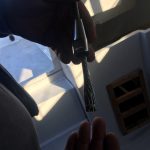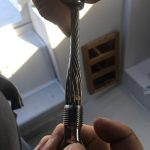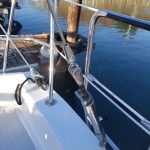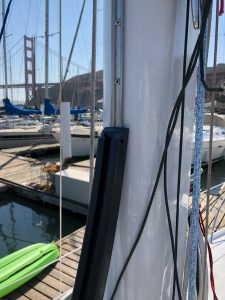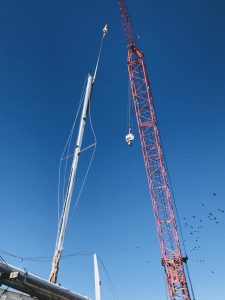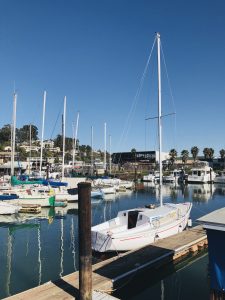Main sail track no-go
Mast stepped
Mast down
Most of the standing rigging was either loosened or removed first. Then, one of the yard workers was lifted up to put a noose around the mast.

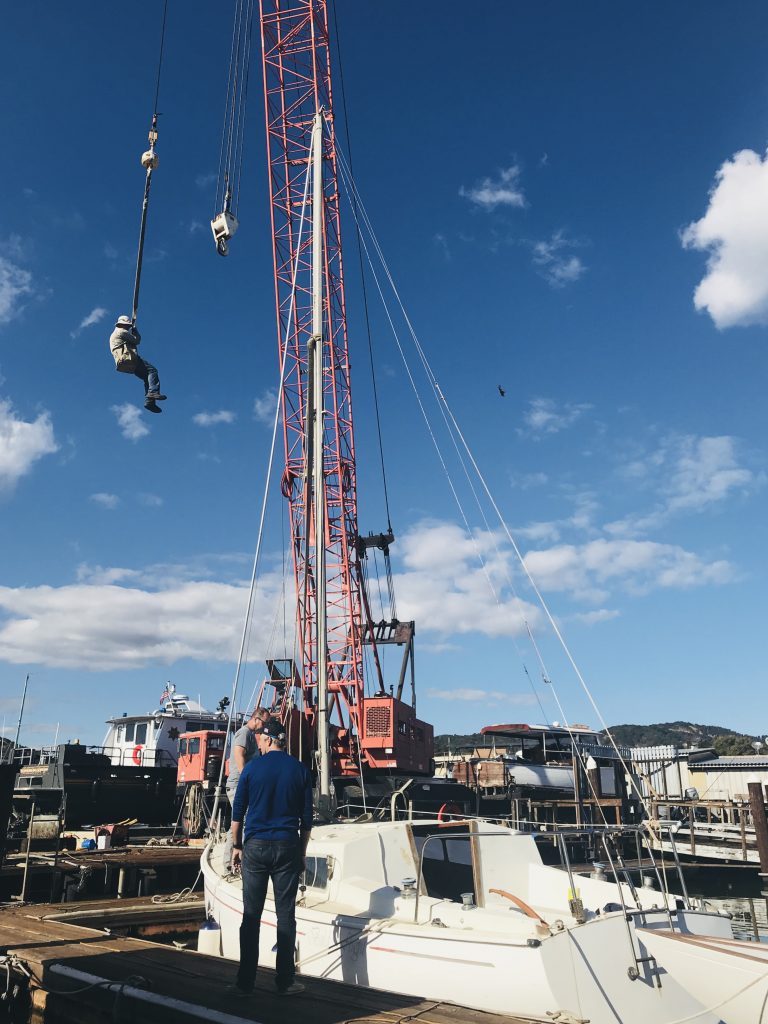
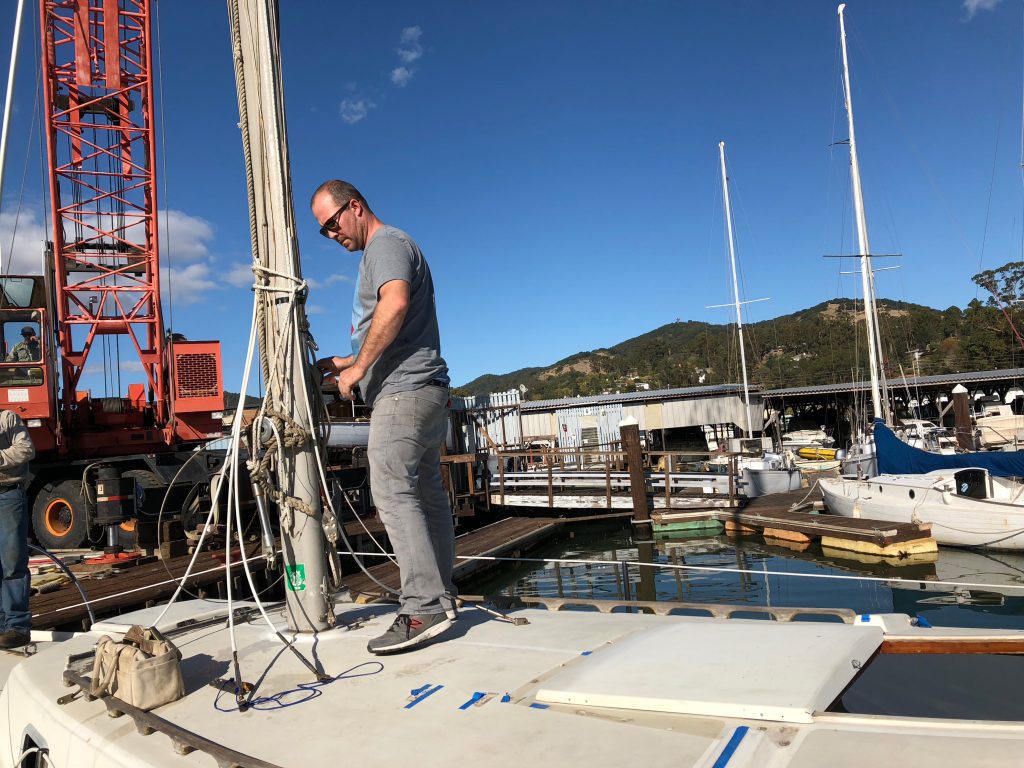
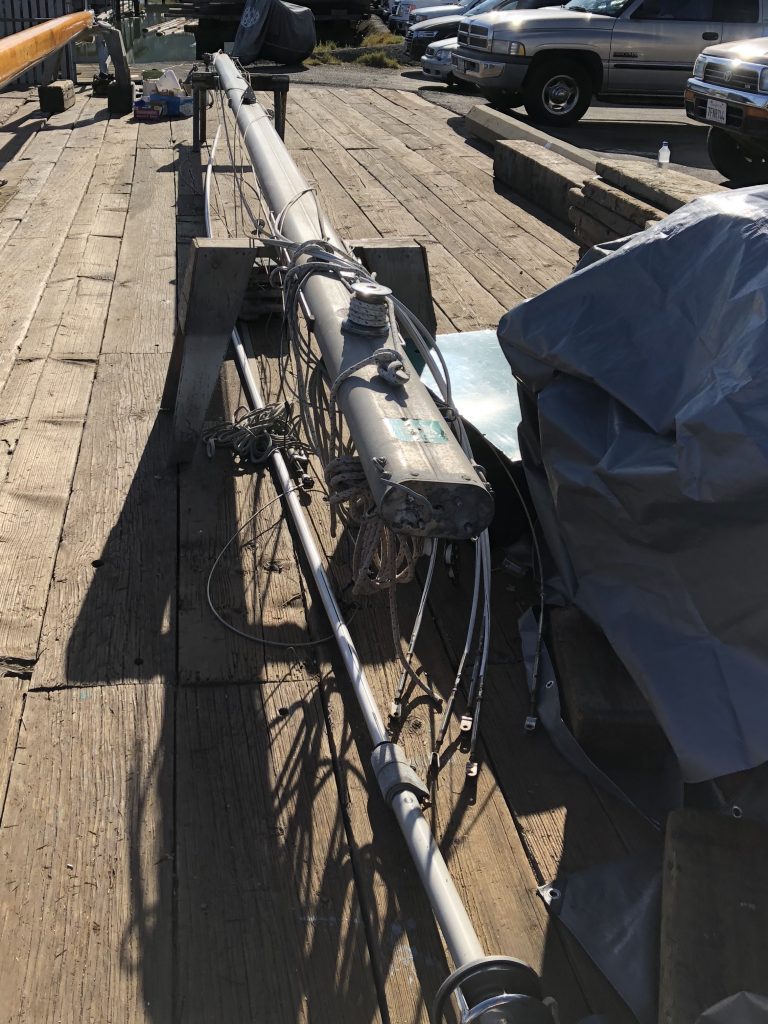
What I learned today:
- It’s possible to use jib halyard as forestay. When removing roller furler, the rigger just hooked jib halyard to steaming plate and I used the winch to tension it. Then we loosened and removed the forestay and the mast didn’t fall on our heads
- Mast needs proper drainage. When we lifted it, a few gallons of water poured from inside of it. Will need to make a few holes for draining water.
Goodbye, rotten spreaders
The wooden spreaders I had were really rotten. Following rigger’s advise, I decided to replace them with lightweight aluminum spreaders so after removing them he shipped them off to so new parts can be fabricated.
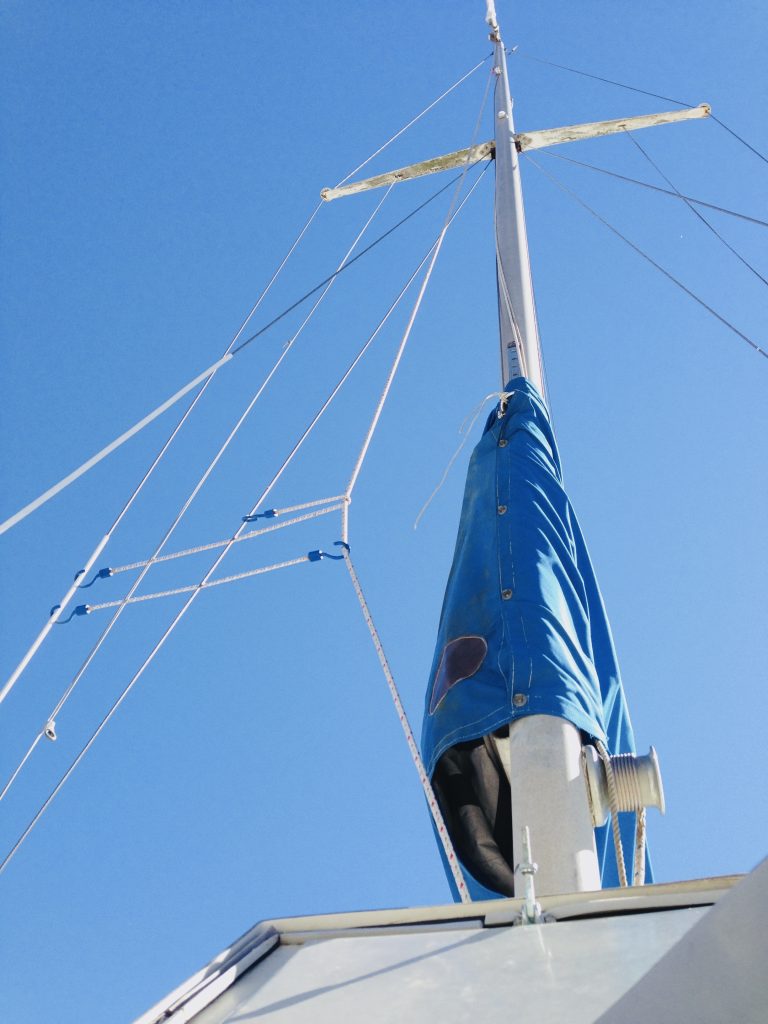

What I learned today:
- Lower shrouds are enough to keep mast in place without load of sails i.e. it’s actually possible to replace upper shrouds without taking the mast down. I was always sure that if a shroud would break the mast would come down. Not true!
- If your rig is configured right, you can use turnbuckles to tighten upper shrouds even with spreaders removed.

